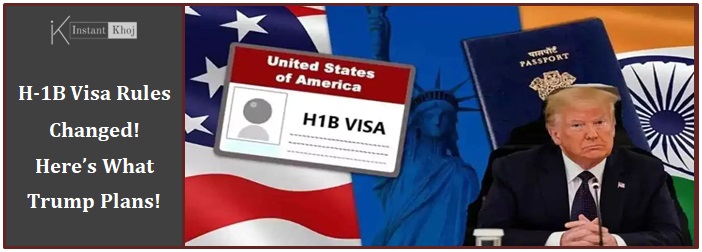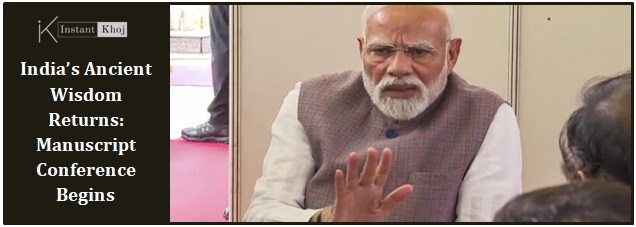On September 19, 2025, U.S. President Donald Trump unveiled a sweeping change to the H‑1B visa program, marking one of the most significant shifts in U.S. immigration policy in recent memory. The announcement introduces a $100,000 fee for new H‑1B visa petitions, along with major changes aimed at reshaping how skilled foreign workers are brought into the United States. The move has triggered strong reactions both domestically and internationally, especially from India, which has been one of the largest sources of H‑1B applicants.
In this article, we’ll explore in detail what Trump announced, the rationale offered, who is directly impacted, the criticisms and potential legal challenges, and what this might mean for the tech sector, foreign workers, and U.S. immigration going forward.
What Trump Announced: Key Elements of the Policy
Here are the main features of the new policy as announced by the Trump administration:
-
$100,000 Fee on New H‑1B Petitions
-
New applicants (i.e., petitions not yet filed) will be required to pay an application fee of $100,000 per H‑1B worker.
-
The fee is meant as a one‑time payment for new petitions, not for renewals or existing visa holders. The White House clarified that current H‑1B holders and renewals are not subject to the new fee.
-
-
Effective Date & Scope
-
The proclamation goes into effect starting September 21, 2025, at 12:01 a.m. ET.
-
Only new visa applications are affected, meaning previously approved H‑1Bs, renewals, or those already in process before the change are generally excluded.
-
-
Rationale Given by the Administration
-
The policy is being framed as a way to curb “systemic abuse” of the H‑1B program. Officials claim that some companies have been using H‑1B workers in lower‐level positions to replace American workers, or to avoid paying competitive wages.
-
Commerce Secretary Howard Lutnick has emphasized that this move is intended to push companies to “train Americans,” hire local graduates, and reduce dependency on foreign workers especially in entry‑level roles.
-
-
Additional Measures
-
Alongside the fee, the administration is revising wage rules and eligibility criteria, potentially making it harder for “lower‑skill” or “lower‑paid” roles to qualify.
-
There are also proposed changes like “Gold Card” and possibly “Platinum Card” residency options for wealthy foreigners willing to pay higher sums.
-
Who Is Affected and How
While the announcement focuses on new applicants, the ripple effects are substantial. Here are the groups most affected and how they may be impacted.
Group | How They Are Affected |
|---|---|
| New H‑1B Applicants | Must pay the $100,000‑fee. This is a major cost increase compared to earlier fees. It may deter companies from sponsoring new foreign hires, especially for junior positions. |
| Existing H‑1B Holders / Renewals | Officially exempt from the fee. But confusion, fear, and uncertainty among holders have been widespread, especially for those traveling or those outside the U.S. at the time of implementation. |
| Dependents (H‑4 Visas) | Not explicitly mentioned in all documents, but some companies have advised H‑4 holders to be cautious about travel or international movement due to uncertainty. |
| Tech Companies / Employers | Big tech firms that rely heavily on foreign tech talent (software engineers, developers, AI specialists etc.) are bracing for increased cost, operational changes, and possibly legal challenges. Some may reduce the number of foreign hires, shift roles to U.S. nationals, or reconsider remote/offsite work arrangements. |
| Countries Sending Many H‑1B Workers (e.g. India) | As per U.S. data, India accounts for a large percentage (70‑72%) of H‑1B visa recipients in recent cycles. New fee and policy adjusts send strong signals to those countries. It risks disrupting family life, employment plans, and the mobility of many workers. |
Criticisms, Concerns, and Potential Legal Challenges
No major policy change of this magnitude comes without backlash. Here are the main criticisms and legal/ethical concerns.
-
Cost & Affordability
-
A $100,000 fee is enormous compared to past administrative / filing fees (which have generally been in the thousands, not tens of thousands). For smaller companies or startups, this could be financially untenable. Critics argue this could push companies to reduce or eliminate foreign hiring, especially at entry levels.
-
-
Discrimination Claims & Equity Issues
-
Many view this as targeting immigrants from specific countries, especially India, which receives a large portion of H‑1B visas. There are accusations that the policy is discriminatory and may violate equal protection principles.
-
-
Innovation & Talent Pipeline Risks
-
The tech sector argues that limiting access to foreign skilled workers could hurt innovation, slow down development in critical areas (AI, biotech, etc.), and force companies to outsource work abroad or focus less on emerging tech initiatives.
-
-
Confusion & Implementation Issues
-
The announcement came with very short notice. Some affected employees are currently outside the country or traveling, and have been warned to return. Companies have issued memos advising caution. Legal ambiguities in how the proclamation is worded have caused panic.
-
-
Legality & Authority
-
Some legal experts question whether the President has the authority to impose such a high fee via executive order. Traditionally, visa application fees are meant to cover processing and enforcement costs—not act as revenue mechanisms or barriers. Laws passed by Congress typically govern many aspects of immigration.
-
How the Policy Fits in Trump’s Broader Immigration Agenda
To understand this announcement better, it’s useful to see how it aligns with Trump’s previous policies and stated priorities.
-
“America First” Agenda: The fee increase is consistent with Trump’s rhetoric of prioritizing U.S. workers, reducing perceived exploitation of foreign labor, and encouraging domestic hiring.
-
Skilled Visa Reforms: There has been ongoing debate in U.S. politics about revising skilled visa rules, raising wage floors, stricter eligibility, and favoring “high value” over “entry level” roles. This policy accelerates that shift.
-
Revenue Generation & Budget Considerations: With the fee being steep, the policy is also viewed as a way for government to raise revenue. In some sources, the administration has indicated funds from the visa fee increase may be used in part for reducing deficits or funding other priorities.
Potential Consequences: Short‑Term & Long‑Term
Here are some of the direct and indirect impacts this policy could have, in both the near future and over the longer term:
Short‑Term Effects
-
Travel Disruption: Some H‑1B holders who are outside the U.S. or planning international travel may rush to return or avoid travel for fear of complications with reentry. Companies have already issued advisories.
-
Hiring Freeze / Delay: Companies may pause filing new H‑1B petitions for roles that are less senior or less “value‑driven” due to cost. Entry‑level jobs may be hardest hit.
-
Stock Market/Financial Sector Reaction: Companies heavily reliant on H‑1B workers (especially in tech and outsourcing) may see stock fluctuations; Indian IT firms have reportedly already been impacted.
Long‑Term Effects
-
Shrinking Talent Pool: Fewer foreign skilled workers may be able to enter the U.S., tightening competition and possibly incentivizing companies to relocate some operations abroad.
-
Shift in Visa Strategy: Employers may explore alternative visa categories (if possible) or shift recruitment strategies—e.g., hiring more locally, investing in training U.S. graduates.
-
Legal Challenges & Legislative Response: Lawsuits are likely. Congress might intervene if there is substantial backlash or if courts find parts of the policy unjust or beyond presidential authority.
-
Effect on Immigration Relations: Diplomatic tension, especially with countries with many affected nationals (such as India). Concerns about fairness, treatment of workers, family disruptions may strain relations.
Reactions: Support, Backlash, and Mixed Reviews
The announcement has drawn widespread and intense reactions:
-
Supporters: Advocates say this is necessary to protect U.S. jobs, reduce under‑payment of foreign workers, and ensure the program is not abused. Those favoring tighter immigration policies see this as a strong, decisive move.
-
Critics: Tech industry leaders, foreign nationals, think tanks, and many economists are expressing concern about the innovation cost, competitiveness, and potential brain drain. Opponents claim it could hurt U.S. interests rather than help them.
-
Indian Government and IT Industry: India has officially expressed concern about family disruptions and the impact on its tech sector. Trade bodies such as Nasscom warn of disruptions to ongoing contracts, projects, and that firms may face staffing challenges.
Conclusion: A Policy with Big Ripples
Donald Trump’s announcement to impose a $100,000 fee on new H‑1B visa applications marks a turning point in U.S. immigration policy. It’s not just a fee hike—it is a signal that the administration is reimagining how skilled foreign workers fit into the national labor market, whose priorities are being protected, and how costs are being allocated.
For new applicants and companies, it means higher financial burden and stricter scrutiny. For existing visa holders, relief in the exemption—but still anxiety and uncertainty. For international stakeholders, especially countries heavily represented among H‑1B holders, it’s a development that demands attention, adaptation, and possibly diplomacy.
Also Read:
GST 2025: Easy Guide to New Rates and Slab Changes Chart!
FollowCurrent AffairsonInstantkhoj for more latest stories and trending topics.





One thought on “H-1B Visa Rules Changed! Here’s What Trump Plans!”